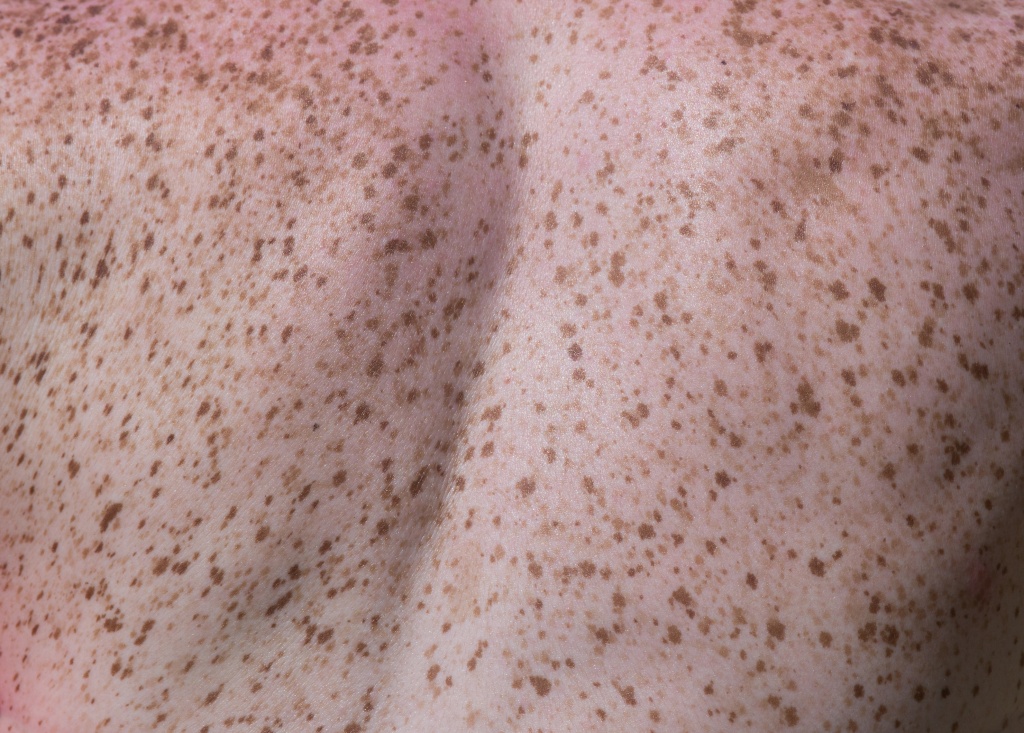
The other day my young nephew was showing me how to play a video game on his handheld device (officially termed a whatchamacallit). I was losing, and maybe he thought I was a lost cause, because he distracted himself by pointing at my arm, where something like 3.5 million freckles are scattered.
“What are these?” he asked.
“Those are just my freckles.”
“Why is your skin like that?”
I mumbled something about lacking melanin and went back to losing at the video game. But his questions made me realize it would do me well to learn the reasons behind my own skin type.
What Are Freckles?
Well, they formally go by ephelides—which comes from the greek word ephelis for concentrated pigmentation. They’re flat, generally brownish in color, and tend to spread like crazy on days when I’ve forgotten my sunblock. There’s not one pointed reason why freckles show up. But if you have the perfect combination of sun exposure and genetics, those dots will likely flare up.
The MC1R Gene Mutation
Every freckle’s origin comes from deep inside, all the way down to the chromosomal level. The MC1R gene is the guidebook your body uses to produce melanin through the melanocortin 1 receptor. Normally this receptor, located on melanocyte, will produce a type of melanin called eumelanin, resulting in an even tan after sun exposure.
But freckles are a different story.
When the receptor is blocked or inactive, it will produce pheomelanin. Pheomelanin is the specific type of melanin responsible for freckles, and usually light hair and eyes too.
The variance in the MC1R Gene that results in freckles means that your speckles can be considered mutations. But if you’re not a fan of X-Men and don’t want to embrace your mutant side, they’re also called polymorphisms or variances in the gene.
Ultraviolet Light
But a freckle isn’t made even if all the genetic factors are in place. Even people with the MC1R gene mutation will never have a single spot if their skin isn’t exposed to ultraviolet light. If this person exists, I want to know what sunscreen they’re using.
Any lifelong freckle face will know that freckles aren’t going to pop up under fluorescent lights or incandescent bulbs. But a few minutes outside sans sunscreen, even on a cloudy day, and most likely you’ll see the freckles start to react. This is because freckles are receptive to ultraviolet light, particularly the stronger UVB waves.
It might seem like the sun is beating down with intense UVB waves to make our skin start to freckle. But really, the sun’s waves are a low dose concentration of UVB rays. Ultraviolet only makes up 10% of the sun’s rays, and of that 95% are UVA, leaving a mere 5% as UVB.
That low concentration of UVB rays can still wreak real havoc to our sensitive, freckly skin. Sunscreen is our savior.
The Mysterious Freckle
It’s an easy equation, MC1R mutation + sun exposure = freckles.
But it gets more complicated. That MC1R malfunction that creates the possibility for freckles also determines things like red hair. However, many people have freckles without the scarlet locks. And red hair is recessive, while freckles are dominant.
All this suggests that there’s more to be learned about the mysterious freckle. There are likely more factors at play than the sun and the MC1R gene when it comes to the dots.


One thought on “Spotted Science: What Causes Freckles?”